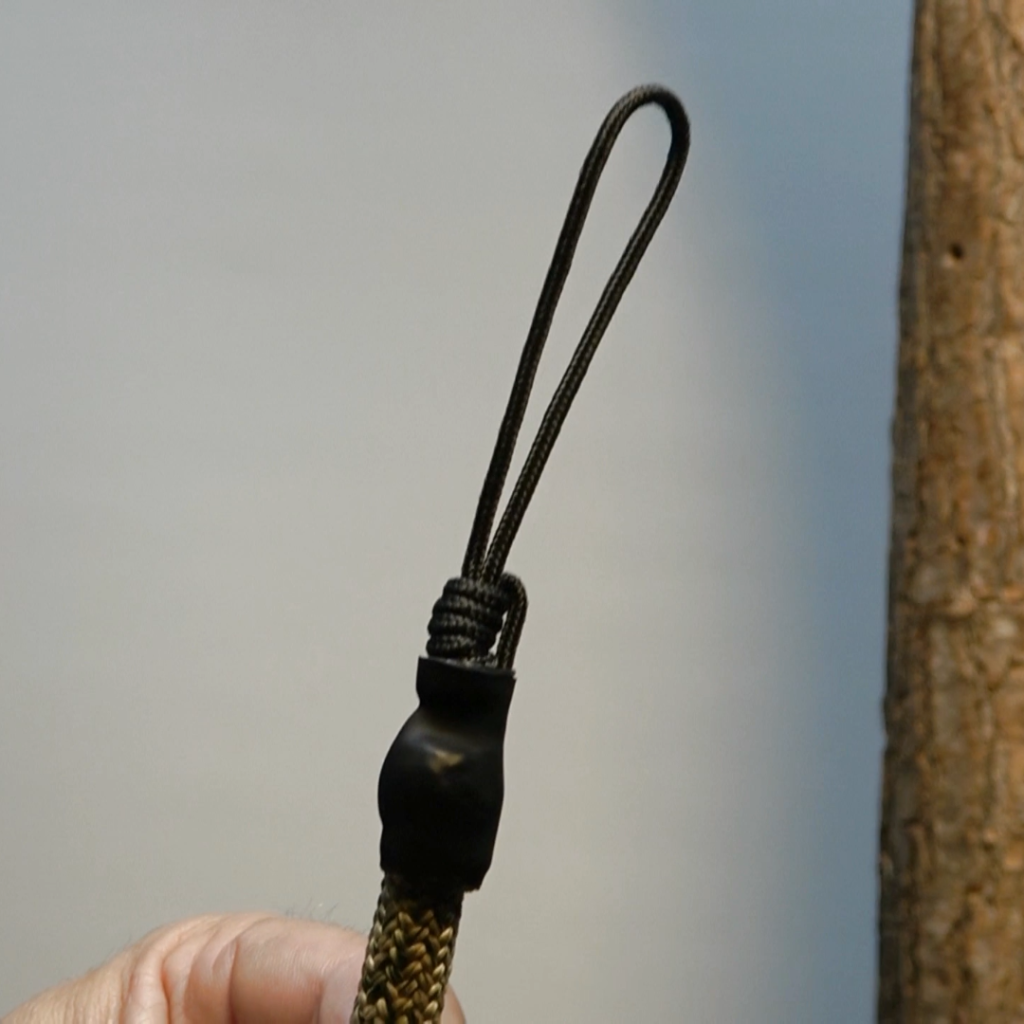
Page Contents:
Overview
The JRB End Loop is a small loop of cord which is weaved into the end of the rope, used to facilitate rigging and retrieving a rope quickly, easily and reliably. It also facilitates hanging the rope for transport or storage after coiling. Although we typically only pull one end of a rope into the tree in a single climbing application, JRB recommends installing an end loop on both ends of the climbing line.
Related videos
Here is the latest video for creating it.
In order to create it, knowledge of the Sliding Triple (or Double) Fisherman’s Knot is necessary:
And this is how it is rigged:
Materials Needed
Besides the rope, this is what we need to create a JRB End Loop. The details on how to create it are described in the video above: JRB End Loop, Version 3. If no Heat Shrink Tubing is available, use the Version 2 video below.
- Accessory cord (links below)
- 2 mm Accessory Cord, use 24″ (61cm) per loop
- 3mm (like paracord) will also work, but use 26″
- 4mm cord has also been used on 11 mm rope, but cut 30″
- A common nail:
- For 2mm cord, use 6d nail (2.9mm diameter)
- For 3mm cord, use 10 or 12d nail (3.75mm diameter)
- For 4mm cord, use a 16 d nail (4.11 mm diameter)
- A hammer
- A lighter
- A rag
- A knife and wood cutting surface
- A pair of scissors
- Recommended: approximately 1″ (2.5cm) of adhesive lined heat shrink tubing of diameter appropriate for the rope: 3/8″ tubing works well on 8mm rope; 1/2″ tubing works 9-10 mm rope. Click on the links below for Amazon Product Options.
(Amazon link for 2mm cord)
Version 2, without HST
This is the prior (version 2) video, which is effectively the same as Version 3, minus the Heat Shrink Tubing. V3 is preferred because the HST does help the rope fit through some of the tighter passages though. Tape can be substituted and it can be put on later.